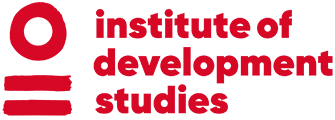resource
A 2009 review of community-based child protection mechanisms, which are frontline mechanisms for responding to threats to children’s well being, reported that externally facilitated groups such as Child Welfare Committees were often limited in their effectiveness and sustainability. This owed largely to the fact that they were not community owned and driven but were seen as projects of outside agencies. The same review reported that higher levels of effectiveness and sustainability were associated with community-driven groups such as endogenous, faith-based groups who had organised around helping vulnerable children. The report noted that Child Welfare Committees were frequently set up without learning about and building on the existing community mechanisms.
The purpose of this research was to learn about community-based child protection processes and mechanisms in two mostly rural areas of Kilifi, Kenya. The research is intended to complement and extend the learning that came from previous research by the Inter-Agency Learning Initiative in two urban slums of Mombasa, Kenya. By using a mixture of urban and rural sites, the Inter-Agency Learning Initiative, which guides this research, aimed to provide a glimpse of the diversity that exists within Kenya. The ethnographic approach used in this phase of research aimed to learn about existing community-based child protection processes and mechanisms and how they are actually used and relate to aspects of the more formal (referred to hereafter as ‘formal’) child protection system in Kenya.
In particular, the research sought to identify how local people understand children and childhood, what they saw as the main harms or risks to children, what CBCPMs existed and how they were used, what protective factors enabled children’s positive coping and resilience, and whether and how the CBCPMs linked with elements of the formal, government led aspects of the national child protection system. Recognising that people in the villages may be positioned in very different ways, the research aimed to disaggregate responses by age, gender, and socioeconomic status. This research aims to contribute to strengthening the national child protection system in Kenya. The effectiveness of the Kenyan child protection system should be gauged not only by how well the system supports children in urban areas but also in predominantly rural areas where many Kenyans live. By providing new, grounded knowledge about how people actually respond to child protection threats and about existing prevention mechanisms, the research provides a snapshot of the functioning system that Kenyans actually use and that can inform efforts to strengthen the national child protection system in Kenya.






